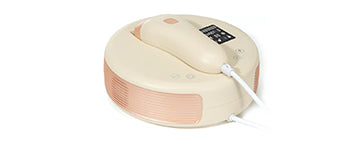Moles, the small, dark blemishes on our skin, serve as more than mere pigmentation spots. Embedded within the skin's intricate layers, they occasionally sprout hair.
The emergence of hair on a mole can be unsettling. This occurrence often leads to questions about potential health concerns. It's essential to differentiate between harmless signs and those that require medical attention. Let's delve into the nature of moles with hair, discerning myth from medical fact and understanding when a mole deserves a closer look.
What Causes Hair to Grow on My Mole?
Hair in moles results from the interplay of hair follicles, genetics, hormones, and sometimes sun exposure. Hair growth in moles occurs when a hair follicle is in the mole area, typically producing thicker hair due to higher melanin. Genetics dictate mole formation and location, leading to hairy moles if they coincide with hair follicle sites. Hormonal imbalances can also stimulate thick, dark hair growth from moles. Lastly, although less common, prolonged sun exposure without protection can lead to hairy moles, particularly in fair-skinned individuals.
Is It Safe to Remove Hair from a Mole?
There's a common belief that removing hair from a mole could lead to cancer. However, this notion lacks scientific backing and is considered unfounded.
Similarly to normal skin, removing hair from a mole doesn't pose any unique risks, allowing for the same hair removal techniques like trimming, tweezing, threading, shaving, or waxing. Electrolysis is also a viable method for mole hair removal.
Nonetheless, it's advisable to approach hair removal from moles with more caution due to the hair's potential thickness and the area's sensitivity, which could lead to skin irritation. It's also crucial to monitor moles for color, size, or texture changes. Consult a dermatologist if any such changes occur to ensure skin health and safety.
Hair on Moles: Good or Bad?
Debunking the myth, hairy moles aren't a problem or linked to cancer. They're benign clusters of melanocytes and hair follicles. While not medically concerning, they may cause cosmetic unease for some. Hairy moles are neither good nor harmful, just a natural part of skin variation.
Is Removing Hair from a Mole Linked to Cancer?
Hairy moles do not indicate cancer, and plucking hairs from them doesn't increase cancer risk. This belief is a myth, possibly linked to rare conditions like teratoma but not applicable to regular moles.
Does Hair Regenerate After Eliminating a Mole?
Hair regrowth from a mole varies depending on the removal method. Plucking or shaving typically returns hair in a few weeks. Laser treatments can leave the area hair-free for years, while electrolysis prevents hair growth permanently.
Distinguishing Moles from Ingrown Hairs
Distinguishing between a hairy mole and an ingrown hair involves noting their characteristics. Moles are often congenital, growing gradually until adulthood, and are typically flat, dark skin patches. In contrast, ingrown hairs can develop at any life stage, usually due to improper hair removal, and appear as bumps with a shady spot, indicating hair beneath the skin. While moles are hyperpigmented areas from which hair emerges, ingrown hairs are raised spots with pigmentation at their core.
What Are the Ways to Remove Hair from a Mole?
IPL (Intense Pulsed Light) hair removal targets and reduces hair growth on various body parts. It emits light absorbed by the hair pigment, damaging the hair follicle and inhibiting future hair growth.
While IPL can effectively remove hair from moles, caution is necessary. The skin around a mole can be sensitive and have different characteristics than the surrounding skin. It's recommended to consult with a dermatologist or clinical professional before using IPL on moles.
Surgical Removal
Surgery is a standard method of mole removal, effectively eliminating both mole and hair. The process typically involves local anesthesia to numb the area, followed by precise excision using a scalpel. Depending on the mole's size, the wound may heal naturally or require stitches. However, one potential downside of surgical removal is scarring, which might necessitate further treatment.
Laser treatment offers a semi-permanent solution to removing hair from moles but carries certain risks. Choosing a laser for dark skin and moles can yield gentle and effective results. Conversely, opting for an unsuitable laser type may risk skin burns, emphasizing the need for careful selection and professional guidance.
Electrolysis
Electrolysis is a permanent hair removal method from moles involving the insertion of a fine needle into the hair follicle. It delivers electric current to destroy it. This method is known for its efficacy, safety, and durability. However, it's worth noting that electrolysis can be pretty painful and time-intensive, particularly for larger mole areas.
These methods each have their own set of considerations, from the permanence of the results to the potential for discomfort or scarring, underscoring the importance of professional consultation and individual assessment.






